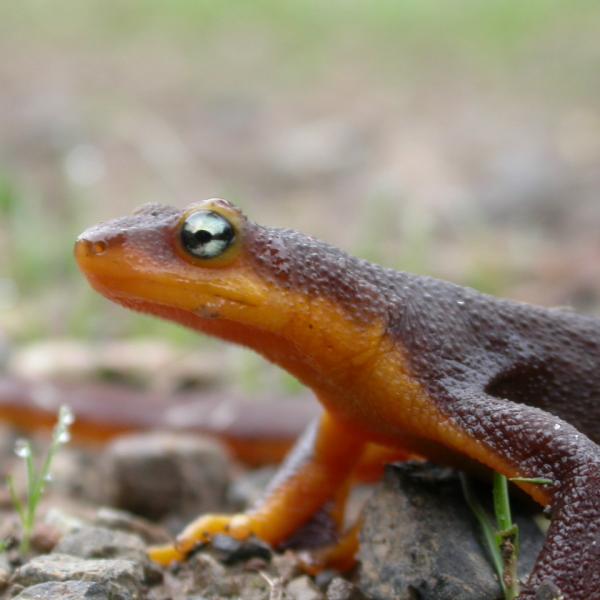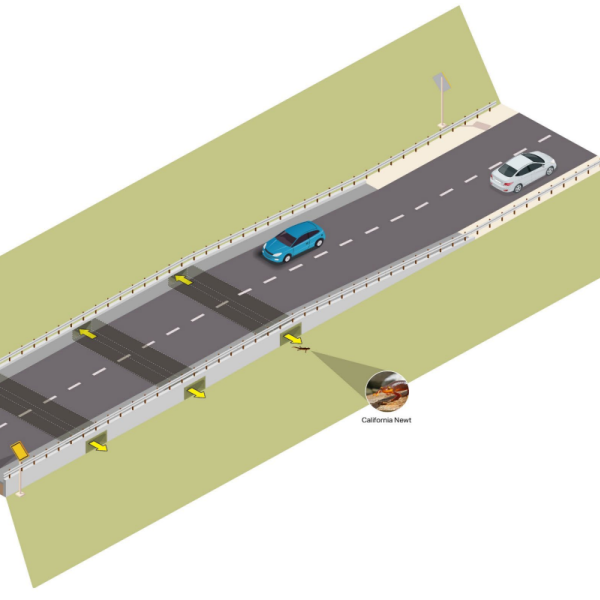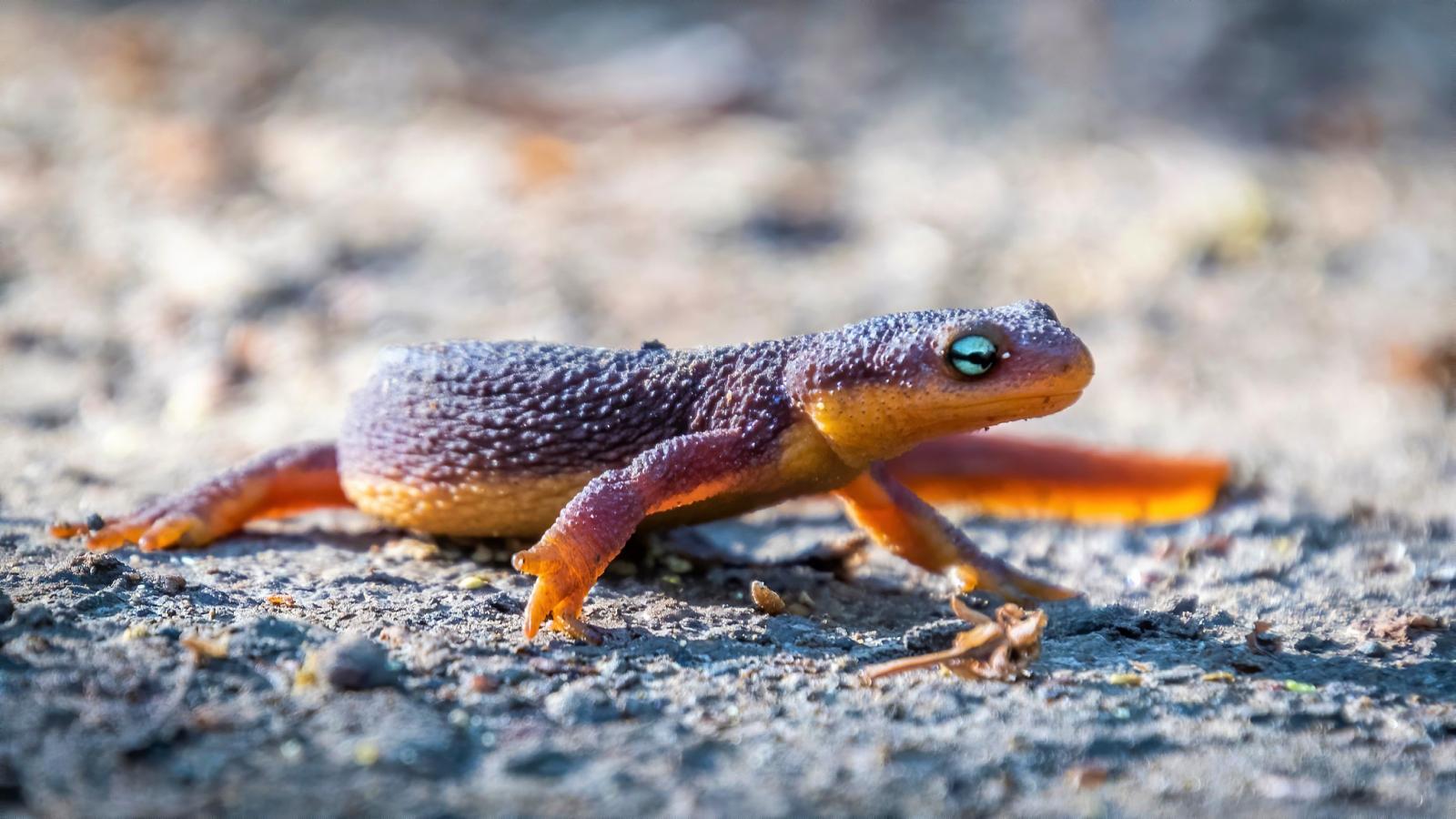Why did the newt cross the road? To get to its winter breeding grounds. During the rainy season, California newts (Taricha torosa), along with other semiaquatic species, journey from their dry season habitats in the woodlands and chaparral of Sierra Azul Open Space Preserve down to the Lexington Reservoir and creeks near the Town of Los Gatos. For the population of California newts in this location the journey can be difficult, and many newts perish trying to cross Alma Bridge Road.
Midpen and our partners are working on solutions to help the newts in the Lexington Reservoir area avoid being struck by vehicles during their annual migration.
“Unfortunately, one of the largest recorded wildlife roadkill events in California happens to newts migrating from Sierra Azul Preserve to Lexington Reservoir,” Midpen senior biologist and project manager Julie Andersen said. “Roads that help people move from place to place can act as barriers for wildlife, cutting off or limiting access to breeding grounds or food sources.”

California Newt
- Has orange skin around the bottom of its eye
- Has eyes that protrude beyond the edge of the jaw line when viewed from above
- Tail bends back/sticks straight backward when the newt adopts its defensive posture
- Lays eggs in masses
The project team —made up of Midpen, Santa Clara County and stakeholders including Valley Water, Peninsula Open Space Trust (POST), neighbors, recreational groups and a cadre of community scientists — recently narrowed down the wildlife crossing for the newts to two viable options featuring elevated sections of roadway coupled with wildlife passage under the road.
With solutions identified, the project team is now creating designs and conducting environmental studies required under California law. Midpen was awarded a $2,120,000 Wildlife Conservation Board grant to help offset the costs of this current phase of the project, estimated at $2,884,000 and anticipated to be complete in 2025.

What could a wildlife crossing for newts look like?
Two options were advanced for additional study, both of which were designed to increase newt population persistence (no net loss in population size) and improve habitat connectivity.
Both alternatives recommend elevated roadway segments coupled with other passage structures to provide sufficient road permeability for effective newt crossings.
Total costs to complete design, permitting, construction and monitoring along 4 miles of roadway is estimated at $28.5 to $33.5 million dollars. The start of construction is dependent on completing the required environmental review and permitting and securing funding.
“Although Midpen does not have jurisdiction over the roadway, we are committed to working with the county, other regional partners and neighboring landowners to support implementation of long-term solutions to reduce road-related newt mortality,” Andersen said.
The newt mortality problem first came to light in 2017 after community scientists began tracking newt mortality along Alma Bridge Road. Midpen and POST funded a study which found that of the nearly 14,000 adult California newts that tried crossing Alma Bridge Road during the winter of 2020, 39 percent were fatally struck. Community scientists have recorded more than 34,000 California newt deaths on this roadway since 2017. If the trend continues without intervention, this population of California newts could be at risk of local extinction in the coming decades.
“We are lucky to have committed partners, from public agencies to environmental advocates, who are all working together to protect this local California newt population and create a more wildlife-friendly roadway,” Andersen said.
This article was originally published in the Winter Views 2023 newsletter under, Safe Passage for Newts: Wildlife Crossing Project Initiated by Community Scientists.

